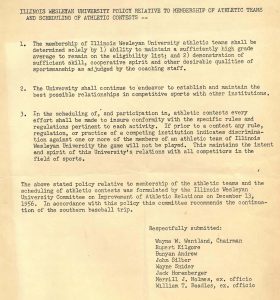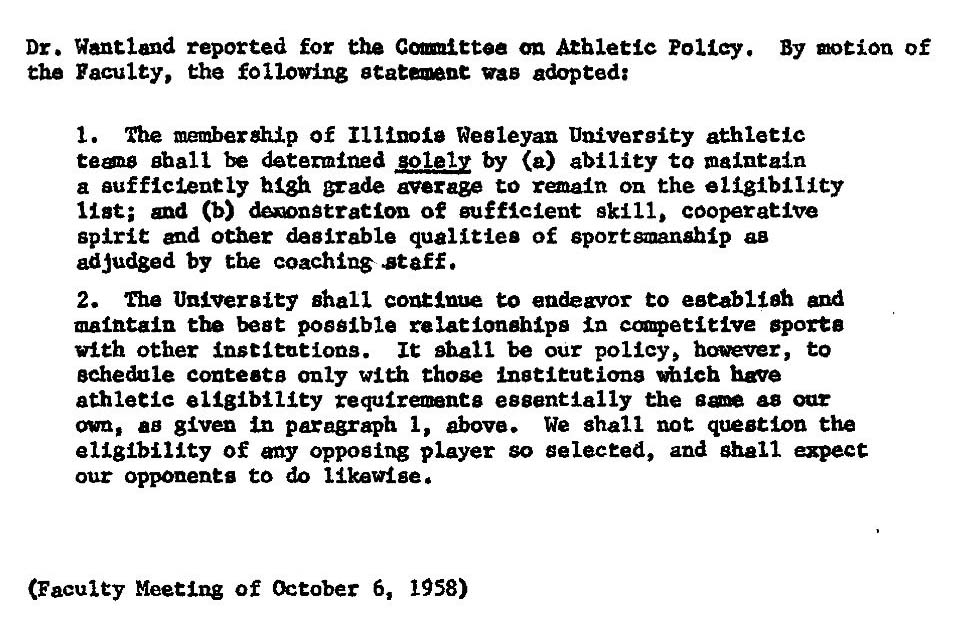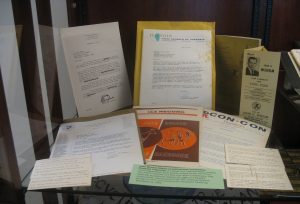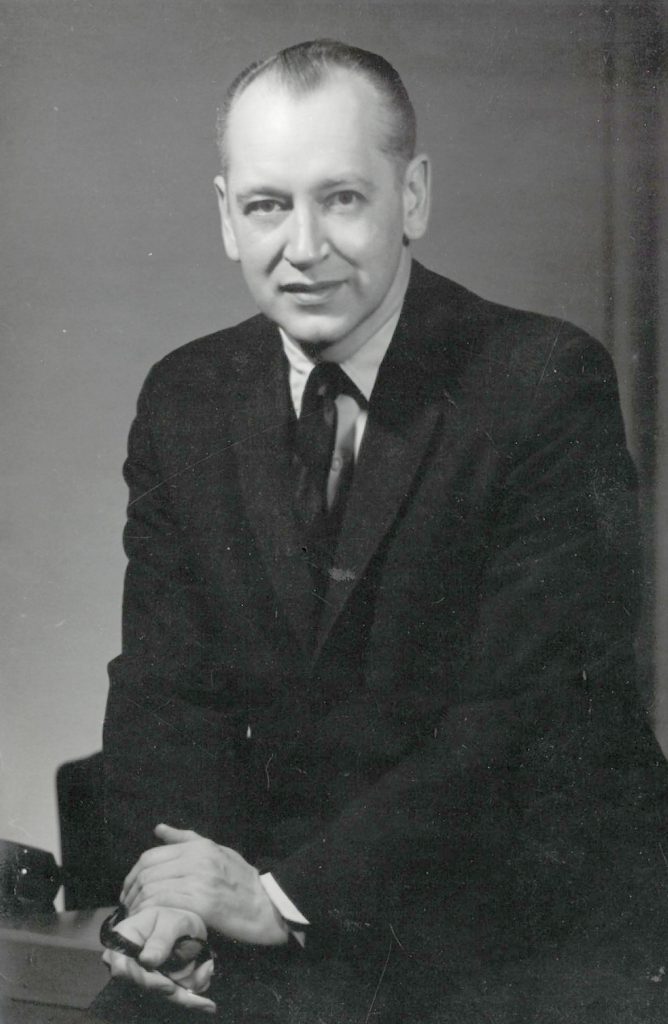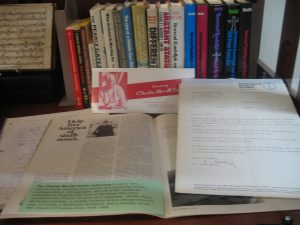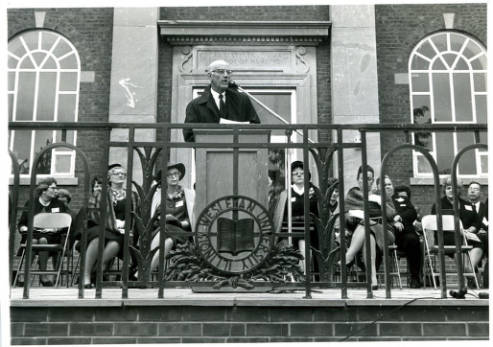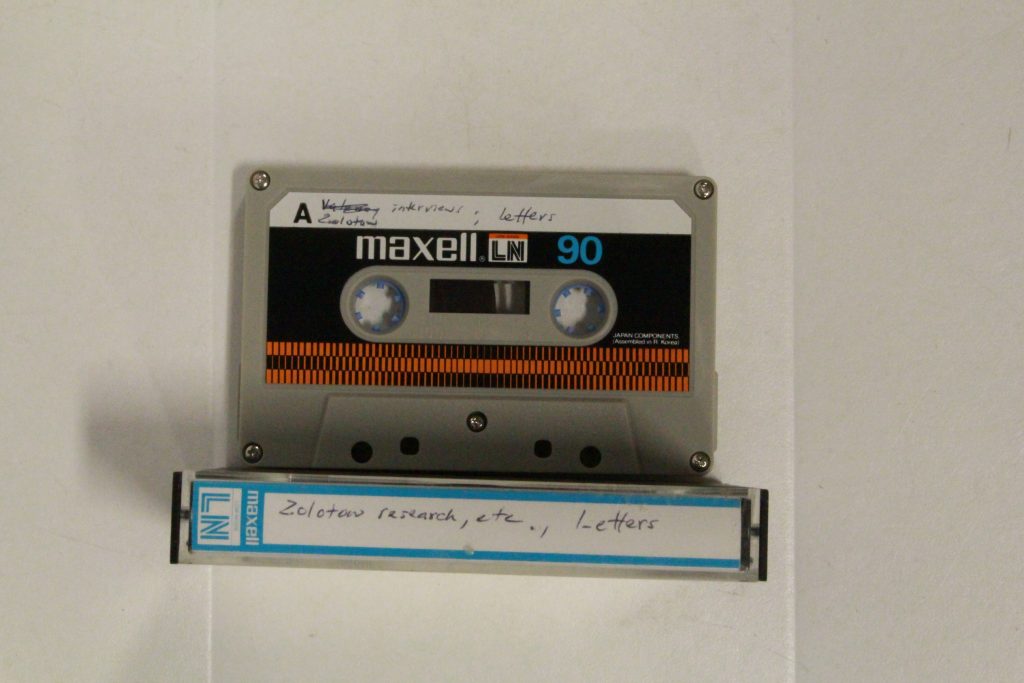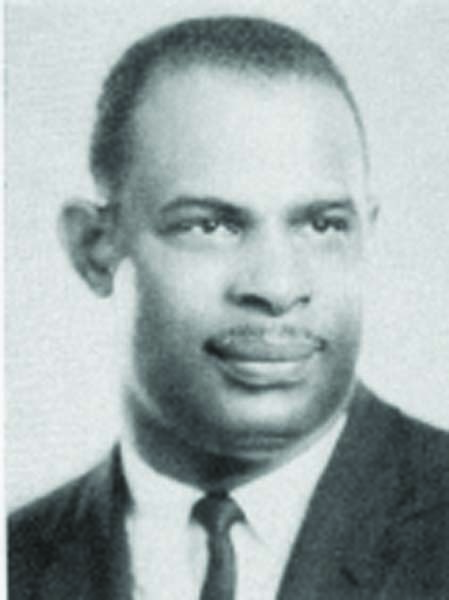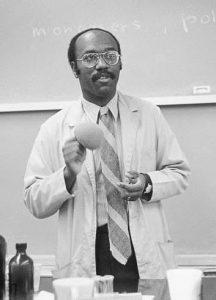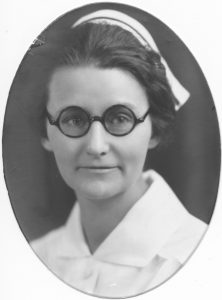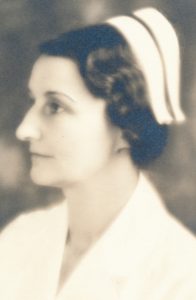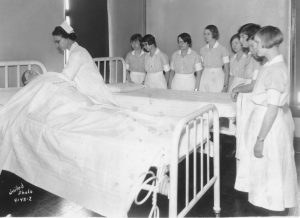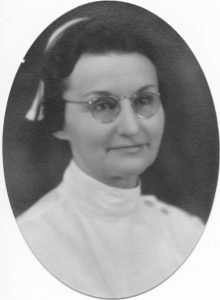IWU Athletics made history with a 1930 spring Baseball training trip to the South (See the 1932 Wesleyana p. 133). A brief mention in the 1950 Wesleyana says IWU was the first school to take a team on this kind of trip annually. The trips spread IWU’s reputation and so were a good recruiting tool for out-of-state students. The Argus often attributes the success of our baseball teams to these non-Conference games and from the first mention on April 16, 1930 (p.6) it was clear that extra practice time was the primary goal.
A recent research request raised the question of our involvement with segregated schools during these trips. I have yet to find mention in the earliest articles on the subject, but in 1955 the Board of Trustees issued a statement that included a point about discrimination based on religion and race with regard to education. Our records are not clear about why such a policy was implemented but this was the year of the Montgomery Bus Boycott, so it is not difficult to imagine how topics in the larger world could influence decisions inside the Wesleyan Bubble.

More to the point of this post, on December 3, 1956 the Faculty Meeting Minutes show a question raised about policies regarding “colored players on our baseball trips and on other sports teams.” The Athletics Committee of the Board of Trustees took up the question.

The committee brought a policy back to the faculty on January 7, 1957 which was debated and approved. The policy below was written by the Committee on Improvement of Athletics Relations on December 13, 1956.
A revision reported to the faculty on October 6, 1958 is pictured below and is attributed to the Committee on Athletic Policy. No separate records of these groups exist in the University’s archives and this statement was actually found in the March 1965 Faculty Meeting Minutes. It does not explicitly mention race and instead defines two criteria IWU uses, and expects its opponents to use, in determining eligibility of players.
Of course, agreed upon policies don’t always translate into actions. By early 1965 the faculty raised the question again. A February 5 (p. 3) Argus article implies that the Southern trips to segregated schools continue “because we at present have no Negro on the baseball team….” That statement is affirmed in a quote attributed to Jack Horenberger in the February 12, 1965 Argus (p. 1). Horenberger “agreed ‘in principle to the recommendation'” and added “that the present policy has never been fully invoked due to the fact that ‘he (sic) has never had a Negro come out for baseball.'” The same article mentions a new proposal that would prohibit IWU scheduling games with segregated schools regardless of the presence of an IWU athlete who is black.
A motion from the Human Relations Committee, which the February 5, 1965 Argus reports was recently formed, is raised at the March 1965 Faculty Meeting and is more explicit than previous statements regarding integrating athletic teams. It appears to receive approval and yet the record pictured below concludes that it is the 1958 policy that is ultimately affirmed.

At least one alumnus, the person who most recently prompted this inquiry, feels the policy was enforced. A further search of the student newspaper only reveals a later interview with a faculty member reminiscing on the controversy in the 1960s (February 22, 1985 Argus p. 6). She thought the lack of black athletes on IWU’s teams wasn’t a coincidence considering the poor climate of social justice on campus in the 1960s. Alumnus Luther Bedford (’59; track and 3x football letterman) shared his experiences, including examples of discrimination in this era, in a 1999 interview for the Minority Alumni Network.
Call for participation from Meg (your archivist):
A review of the sources for this post reveals several mentions of College Conference of Illinois and Wisconsin (CCIW) policies regarding scheduling competitions. It would be an interesting exercise to compile a list of the IWU Spring schedules in this era in order to identify segregation policies of the schools we played and to look at the development of specific rules for CCIW schools. I would also be interested in hearing stories from IWU athletes during this time period and from any others who were impacted by these decisions. You, too, can contribute to our knowledge of IWU’s history! Any takers? Contact archives {at} iwu.edu

